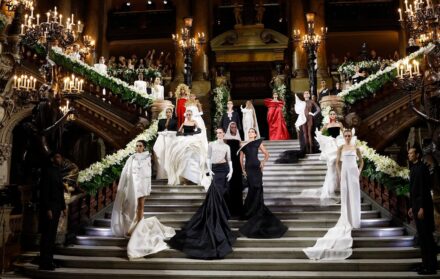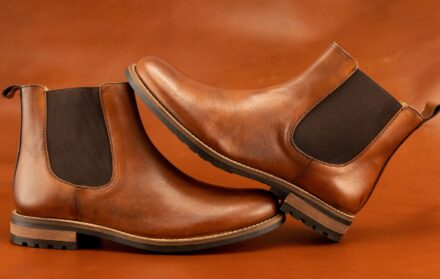How do watchmakers decide what to call their watches?
Is it a coincidence that iconic watches – Rolex’s Daytona, Omega’s Speedmaster, TAG Heuer’s Monaco – tend to have iconic names?
Hear someone speak of their new Manero, Seastar or Streamliner and you might just think they’re talking about their latest superyacht from Lürssen, Feadship or Heesen. In fact, the names relate to watches; timepieces recently launched by Carl F. Bucherer, Tissot and H. Moser & Cie, respectively. Elsewhere, 2023 saw the launch of a new Zenith Skyline, the Oceanking from Monta, and Grand Seiko’s Tentagraph.
We may have grown accustomed to such adrenaline-charged, adventure-evocating horological nomenclature, but the act of naming a watch so as to bestow a certain personality upon it is a return to an old, somewhat forgotten, habit of the pre-quartz era.
Before the mechanical watch industry was brought to its knees by the advent of cheap, mass-produced quartz watches in the mid-to-late 1970s, there had been two decades of some quite spectacular moniker-making.
Just think of the intriguing Golden Horse (Rado), the tongue-twisting Ploprof (Omega), the difficult-to-confidently-pronounce Bivouac (Favre-Leuba), the self-assured Conquest (Longines) and the well-heeled Monaco (Heuer). There were also watches of tomorrow: Favre Leuba’s Moon Raider, Wittnauer’s Futurama, Seiko’s Astron and Amida’s Digitrend, to name but a few.
“Many watch names chosen by the industry over more recent years can sound a little dull in comparison,” concedes Zenith’s Head of Products, Romain Marietta. “The watch market was much smaller in the ’60s and perhaps there was not a sense of just how big some of the brands that survived would get. These days, there are far more things to consider when naming a watch. We could come up with much cooler alternatives to the ones used but often they don’t work, for one reason or other.”
Naming a watch is no easy task. Do you aim to capture a watch’s functionality? Think Breitling’s Navitimer or Omega’s Speedmaster. Perhaps it’s better to capture its spirit. See Junghans’ Max Bill, Bulgari’s Octo Finissimo or Hublot’s Big Bang. Other watches have been informed by the spirit, or technology, of the time. Cartier’s blocky Tank was, famously, inspired by the new Renault tanks that Louis Cartier had seen in use on the Western Front in 1917 – a name, you might argue, that’s somewhat at odds with such an understated dress watch.
Then there’s Jaeger-LeCoultre’s Polaris, named by a US sales agent after another, more potent, weapon of war. Concluding that the brand’s standard approach – assigning its models a name based on the three digits of the calibre that powered them – just wasn’t going to cut it, the rep was apparently inspired by the UGM-27 Polaris, a nuclear missile produced by the US Navy during the ’60s. The agent, arguably, proved his point – the Polaris went on to become one of Jaeger-LeCoultre’s best-known models.
“We very much start with the movement, and use its three digits as a code name for the project, until some kind of cool nickname starts to emerge,” explains Lionel Favre, Jaeger-LeCoultre’s Product Design Director. “That then becomes the nickname for the project. With the Polaris line, the initial name, E859, was thought to be too simple. An agent in the States wanted to find something that would highlight the innovative spirit of this diving alarm watch.”
On the subject of underwater watches, not only does Blancpain’s Fifty Fathoms enjoy the kudos of being the world’s first bona fide dive watch – that is to say, a watch designed with the explicit purpose of exploring the depths of the oceans – it also makes a pretty strong claim for being the most emotively-named of any dive watch.
On the surface (ahem) ‘Fifty Fathoms’ is a reference to the depth to which divers could safely descend at the time of the watch’s conception in 1953 (around 91 metres). However, Shakespeare fans might also appreciate Blancpain’s nod to a grisly line from The Tempest. ‘Full fathom five, thy father lies,’ says Ariel, revealing to Prince Ferdinand that his father, the King of Naples, has gone down with a shipwreck (a slightly ominous reference for a dive watch, you might say).
What of Tudor’s big hit, the Black Bay? The name was given simply to conjure up the idea of a remote, exotic cove of the kind that might, says the company, feature in Pirates of the Caribbean. If that sounds a rather haphazard way of naming a watch, especially in today’s era of think tanks and consumer focus groups, haphazard is still more the norm than the exception. External agencies of the kind that now specialise in naming products remain, largely, unused in the watch industry. For Zenith, the name of a new watch is ultimately chosen by a committee of six, comprising CEO Julien Tornare and the heads of the company’s five main divisions.
“Good names, the options we really consider, can come from anywhere,” says Zenith’s Marietta. “We try to be honest in our opinions. It’s like being presented with a new design. We try to avoid saying out loud if we really hate it – we’re Swiss, after all. It can take some time before we’ve agreed on a name. Sometimes the name only comes very close to the launch.”
One reason that watchmakers tend to return to their historic names – as Zenith did in 2009 with the Defy, a moniker first used in the 1960s – is that they own the rights to the names, either legally or through usage. Older companies have, of course, built a portfolio of names from which to pick.
Another factor that watchmakers must now consider when christening a new watch is internationality. Watch companies now operate in a global market; a name has to work across multiple languages and cultures. The chosen handle has to be both pronounceable and above local significances or associations. Get the name wrong – by simply giving it a code number, for example – and invariably enthusiastic collectors will choose a nickname among themselves: Seiko, for instance, has seen its watches affectionately dubbed the Tuna Can, Monster, Samurai, Arnie and Turtle.
For those brands that do work on giving their watches interesting and exciting names, the effort can pay off. As with other increasingly specialist, anachronistic products – sports cars spring to mind – the name is often central to the package. In rare cases, the name of a watch can even act as a mononym for an entire brand.
“You don’t want a Rolex Daytona,” says Sadry Keiser, Roger Dubuis’ International Marketing Director. “You just want a Daytona. Smart companies find ways of building on the brand equity that can develop in a name – and, from a marketing perspective, that’s genius if you can pull it off.”
Of course, Keiser adds, there are great watches with not-so-great names. “But you have to remember that the watch industry has historically been about working with a product that’s very tangible. Watches are solid things. And the industry isn’t always so good at all the soft, marketing-oriented things like names. There’s a habit of falling back on historic names and using variations of those over and over. But not giving consideration to a name is to lose out on an element that can further make a watch alluring.”
It’s far easier to remember a face than a name, of course. But how much more exciting is it to show someone your Manero rather than your E859?
Read more: The story of the legendary Blancpain Fifty Fathoms






